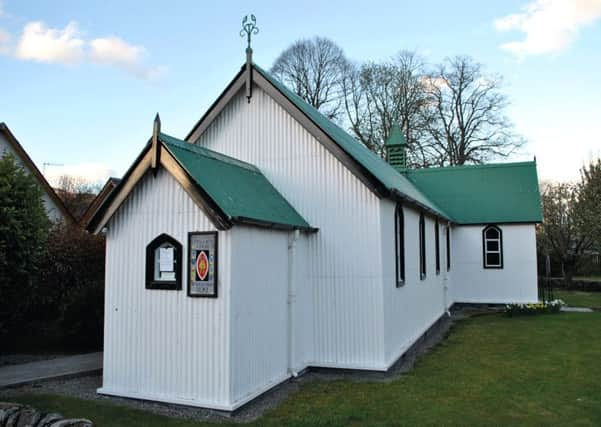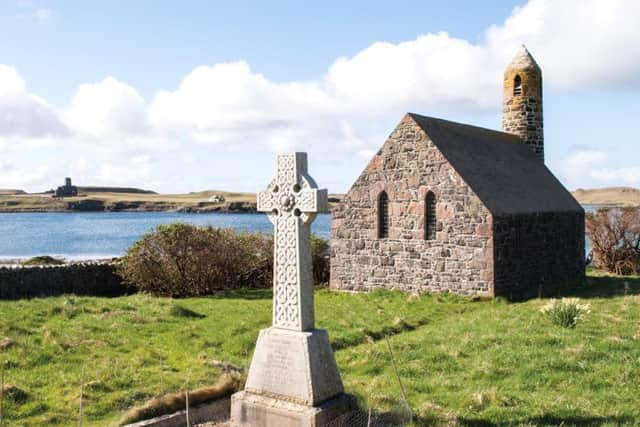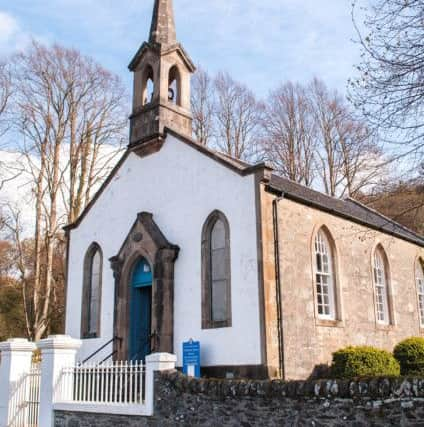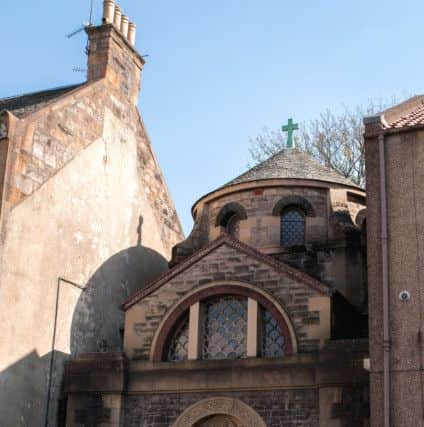Six of Scotland's tiniest churches


Tiny Churches, by Dixe Wills, takes in a tour of some of Scotland’s remotest churches from a “tin tabernacle” set deep in the Stirlingshire countryside to the kirk where evicted Highlanders and their children slept in the churchyard.
Here we look at six of Scotland’s smallest kirks and chapels - many which still welcome worshippers today.
St Fillan’s Church, Killin, Stirlingshire


Advertisement
Hide AdAdvertisement
Hide AdBuilt in 1876 by the Earl of Breadalbane for private use by shooting parties, St Fillan’s earned the name “Grouse Church” among locals. It has been in almost continual use since then and has a weekly Episcopal service and a Roman Catholic mass.
Constructed from corrugated iron, this “tin tabernacle” was bought in kit form from a specialist manufacturer, likely to be the London Iron Chruch and Chapel Co, in which the Earl held shares.
Around 60 such churches were built around Scotland in the 19th and 20th Century.
Author Wills said: “St Fillan’s can lay claim not only to being one of Scotland’s most beautifully preserved examples but also to being the oldest of the survivors.”


St Fillan’s is unusual, he added, given the vast majority of this style belonged to dissenting denominations rather than the state church.
Croick Church, near Ardgay, Sutherland
Built in 1827, Croick was one of 32 identical churches created by an Act of Parliament to bring more places of worship to the Highlands an Islands.


Croick and the others were designed by renowned civil engineer Thomas Telford with the “T-plan parliamentary church” named after the shape of the floor plan.
Advertisement
Hide AdAdvertisement
Hide Ad“The so-called T-plan parliamentary church was the answer to a problem that seems unlikely in this day and age: one of too many Christians and not enough churches for them to attend,” Wills said.
Croick holds bleak evidence to the suffering of 80 Highlanders evicted from their smallholdings by James Gillanders, factor to the Robertsons of Kindeace,
Men, women and 23 children slept in the graveyard after being forced off their land at Glencalvie with one message, etched into a window pane of the church, simply stating: “Glencal peopl [sic] was in the churchyard here May 24 1845”.


Canna Rhu Church, Isle of Canna, Inner Hebrides
This simple rubble kirk was built in 1914 both as a landmark for seafarers and in tribute to Robert (Robin) Thom who sold the island to John Lorne Campbell in 1938.
Also known as the Rocket Church due to its slim bell tower which protrudes skywards, services are no longer held here due to water damage. A major fundraising campaign by the National Trust for Scotland, which now owns Canna, is now underway to protect and restore the church, as well as Thom family memorabilia, for the future.
Hoselaw Chapel, Hoselaw, Scottish Borders
Sitting in the shadows of the Cheviot Hills, deep in the Scottish Borders, is Hoselaw Chapel which was once attached to the Abbey at Kelso.


By 1650, Hoselaw lay in ruins and by the end of the 19th Century, Dr Thomas Leishman was conducting his services in a thatched cottage.
Advertisement
Hide AdAdvertisement
Hide AdFollowing his death it was felt there could be no more fitting memorial to him than the restoration of the chapel.
Hoselaw, where services are still occasionally held, was built in 1906 in tribute to Dr Leishman, the minister from 1855 to 1895 who rose to the highest position within the Church of Scotland.
“Despite spending almost all of his entire working life in the ecclesiastical backwater that is the parish of Linton, he was invited to become Moderator of the General Assembly of the Church of Scotland in 1898, just six years before his death,” Wills said.
His son, James, went on to serve the parish for 40 years.
St Peter’s Scottish Episcopal Church, Linlithgow
Wedged between a chip shop and hairdressers on Linlithgow High Street lies the Byzantine-style church of St Peter’s.
Described by Wills as one of Scotland “more unusual” churches, St Peter’s was consecrated in 1928 to finally give the Episcopalian congregation their own place of worship.
Wills said: “With no building of their own, they met for worship in a bewildering array of locations, including the Court Room of the Burgh Halls, various shops, a defunct pub, a hall on the High Street (requisitioned by the army in 1914), the vacant Craigmailen
United Free Church (forced out by dry rot), and some apparently highly disagreeable premises belonging to the Scotch Girls Friendly Society.”
Advertisement
Hide AdAdvertisement
Hide AdBuilt on a plot less than 8 metres wide, architect J Walker Todd brought light into the small space by putting a circular dome in the roof.
Colintraive Church, Argyll
Colintraive, with its clean white paintwork and bright blue door, stands as a memorial to a “remarkable young woman” called Janet Campbell.
Wills said she was the “driving force” behind the 1840 creation of Colintraive given her concerns over the safety and spiritual wellbeing of the workers on her husband’s estate.
The author said: “Each Sunday they faced a long walk over to the other side of the peninsula followed by a boat trip across Loch Striven to the parish church at Inverchaolain.
“In such circumstances, it cannot have been pleasant to hear the heavens open as the sermon was drawing to a close.”
The first service was held on August 23 1840 but Janet Campbell was unable to attend due to ill health. She died seven weeks later.
-Tiny Churches by Dixe Wills is out now - £16.99, Hardback (AA Publishing)
